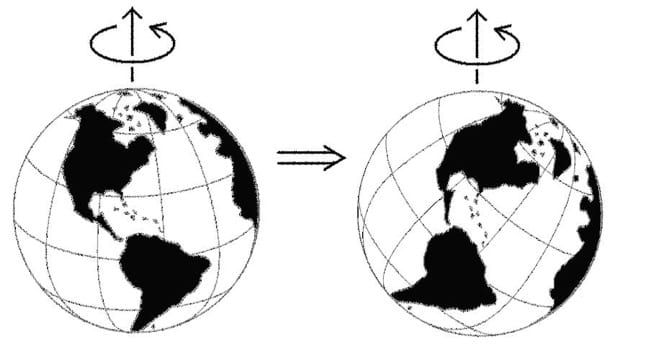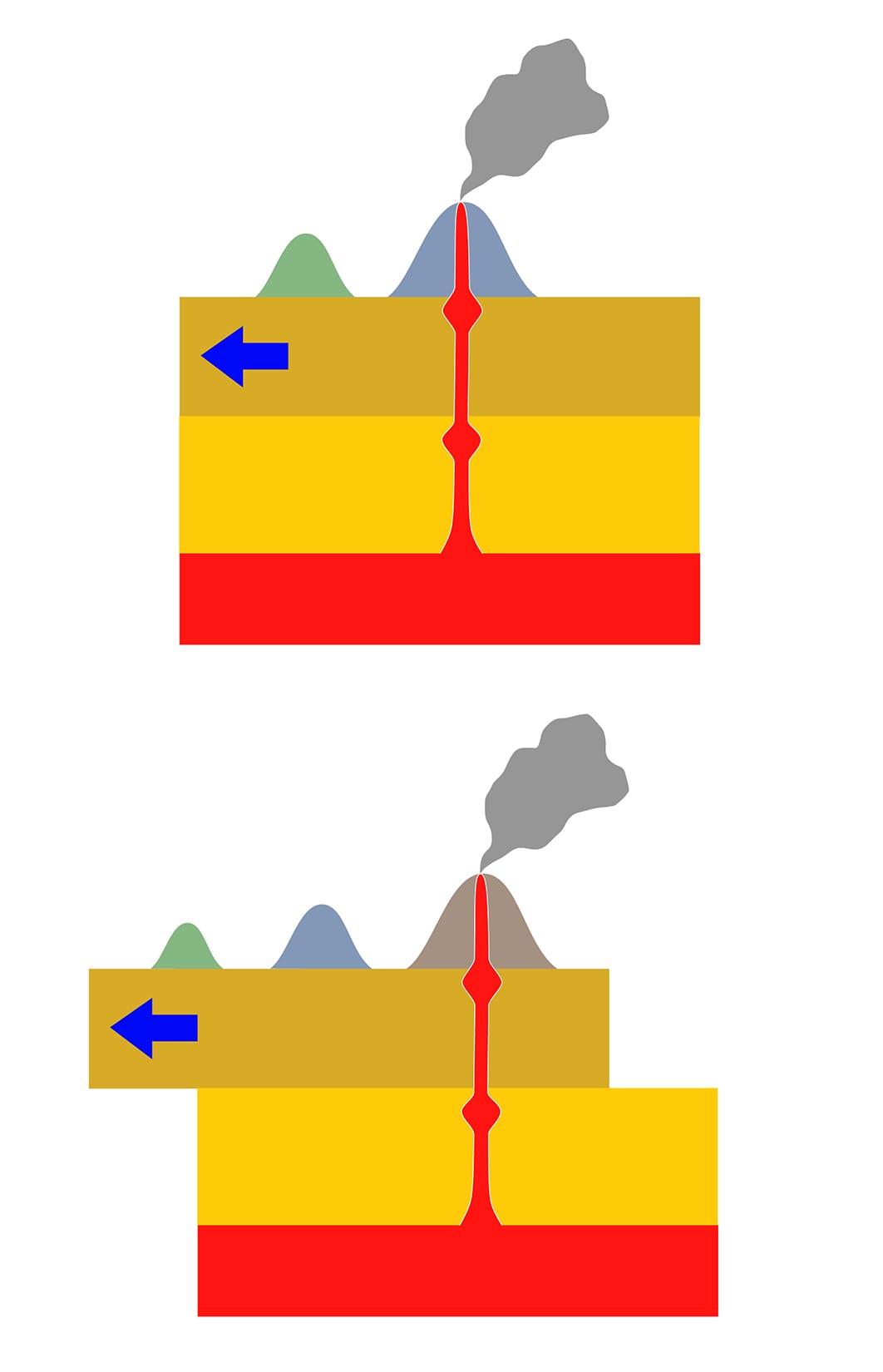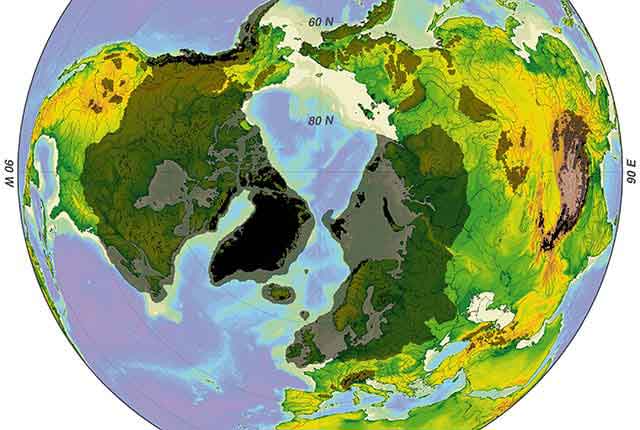Earth’s most recent ice age may have been caused by changes somewhere inside the planet. In light of proof from the Pacific Ocean, including the situation of the Hawaiian Islands, Rice University geophysicists have determined Earth moved in respect to its turn pivot inside the previous 12 million years, which made Greenland move sufficiently far toward the north post to commence the ice age that started about 3.2 million years prior.
Their study started by analyzing fossil signatures from profound sea sediments, the attractive mark of maritime outside layer and the situation of the mantle “hot spot” that made the Hawaiian Islands.
The data suggest that the Earth spun consistently for many years previously moving with respect to its turn hub, an impact geophysicists allude to as true polar wander.
Co-author Daniel Woodworth said, “The Hawaiian hot spot was fixed, relative to the spin axis, from about 48 million years ago to about 12 million years ago, but it was fixed at a latitude farther north than we find it today. By comparing the Hawaiian hot spot to the rest of the Earth, we can see that that shift in location was reflected in the rest of the Earth and is superimposed on the motion of tectonic plates. That tells us that the entire Earth moved, relative to the spin axis, which we interpret to be true polar wander.”

Richard Gordon, the W.M. Keck Professor of Earth, Environmental and Planetary Science, said, “the new findings build on two 2017 studies: one from his lab that showed how to use hot spots as a global frame of reference for tracking the movement of tectonic plates and another from Harvard University that first tied true polar wander to the onset of the ice age.”
“We’re taking these hot spots as marked trackers of plumes that come from the deep mantle, and we’re using that as our reference frame. We think the whole global network of hotspots was fixed, relative to the Earth’s spin axis, for at least 36 million years before this shift.”
“Like any spinning object, Earth is subject to centrifugal force, which tugs on the planet’s fluid interior. At the equator, where this force is strongest, Earth is more than 26 miles larger in diameter than at the poles. True polar wander may occur when dense, highly viscous bumps of mantle build up at latitudes away from the equator.”

“Imagine you have really, really cold syrup, and you’re putting it on hot pancakes. As you pour it, you temporarily have a little pile in the center, where it doesn’t instantly flatten out because of the viscosity of the cold syrup. We think the dense anomalies in the mantle are like that little temporary pile, only the viscosities are much higher in the lower mantle. Like the syrup, it will eventually deform, but it takes a really, really long time to do so.”
On the off chance that the mantle abnormalities are sufficiently gigantic, they can unbalance the planet, and the equator will slowly move to convey the abundance mass nearer to the equator. The planet still twists once every 24 hours and true polar wander does not influence the tilt of Earth’s spin axis in respect to the sun. The redistribution of mass to another equator changes Earth’s shafts, the focuses on the planet’s surface where the soin axis develops.
Woodworth said, “the hot spot data from Hawaii provides some of the best evidence that true polar wander was what caused Earth’s poles to start moving 12 million years ago. Islands chains like the Hawaiians are formed when a tectonic plate moves across a hot spot.”
“True polar wander shouldn’t change hot spot tracks because the hot spot track is the record of the motion of the plate relative to the hot spot.”
Gordon said, “It was only about a 3 degree shift, but it had the effect of taking the mantle under the tropical Pacific and moving it to the south, and at the same time, it was shifting Greenland and parts of Europe and North America to the north. That may have triggered what we call the ice age.”
Earth is still in an ice age that began about 3.2 million years ago. Earth’s poles have been covered with ice throughout the age, and thick ice sheets periodically grow and recede from poles in cycles that have occurred more than 100 times. During these glacial cycles, ice has extended as far south as New York and Yellowstone National Park. Earth today is in an interglacial period in which ice has receded toward the poles.
Gordon said, “true polar wander is not merely a change in the location of Earth’s magnetic poles. As the planet spins, it’s iron core produces a magnetic field with “north” and “south” poles near the spin axis. The polarity of this field flips several times every million years, and these changes in polarity are recorded in the magnetic signatures of rocks the world over.”
“The paleomagnetic record, which is often used to study the movement of tectonic plates across Earth’s surface, contains many instances of “apparent polar wander,” which tracks the motion of the spin axis and which includes the effects of both plate motion and true polar wander,” Gordon said.
Gordon said, “Earth’s mantle is ever-changing as new material constantly cycles in and out from tectonic plates. The drawing down and recycling of plates via subduction provides a possible explanation for the highly viscous mantle anomalies that probably cause true polar wander.”
“In class, I often demonstrate this with lead fishing weights and pliers. It’s easy to deform the lead with the pliers, and it’s not brittle. It doesn’t crack or fly apart when it fails. That’s a pretty good analogy for mantle flow because that’s the way silicate rock deforms under intense heat and pressure.”
Their study is published in the journal Geophysical Research Letters.
